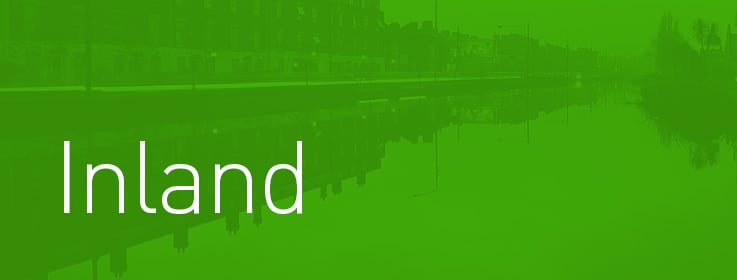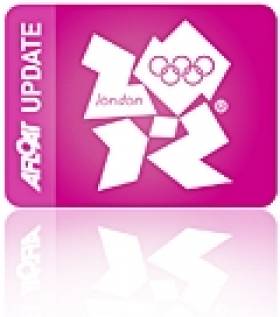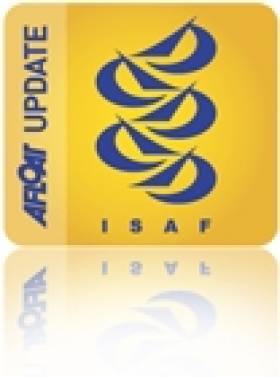Displaying items by tag: IOC
IOC Vice-President Ng Ser Miang Rejects Claims of Wrongdoing After Fine and Warning for World Sailing Vote Interference
IOC vice-president Ng Ser Miang has rejected accusations of wrongdoing after he was found guilty of interfering in a World Sailing election.
The Singaporean entrepreneur was determined by an independent panel to have had a conflict of interest in the contentious 2020 vote that saw Quanhai Li of China elected as president of sailing’s world governing body by a narrow margin over Denmark’s Kim Andersen.
According to insidethegames.biz, Ng and Dieter Neupert, a Swiss lawyer who was the acting chairman of the World Sailing Ethics Commission at the time, were both handed an official warning and fined €1,000 each following more than two years of investigations by the panel, which was chaired by lawyer and former Ireland football international Gareth Farrelly.
It was alleged that Ng had emailed a member of the World Sailing Election Commission canvassing against Andersen and another candidate, Uruguay’s Scott Perry, with the suggestion they could damage the federation’s reputation if elected.
Ng was accused of failure to act with utmost integrity, honesty and responsibility, and of acting in a manner that was likely to compromise the impartiality of the ethics commission.
Speaking to The Straits Times, 73-year-old Ng emphatically denied the charges, saying: “World Sailing has no jurisdiction over me after December 2020 [when I resigned from the Ethics Commission]. I have not taken part in any of their proceedings and reject any allegations and sanctions made against me by World Sailing.”
IOC Urges all International Federations to Relocate or Cancel Their Sports Events Currently Planned in Russia or Belarus
The Executive Board (EB) of the International Olympic Committee (IOC) reiterated today the IOC’s strong condemnation of the breach of the Olympic Truce by the Russian government and the government of Belarus through its support in this. The respective UN resolution was adopted by the UN General Assembly on 2 December 2021 by consensus of all 193 UN Member States. The Olympic Truce began seven days before the start of the Olympic Games, on 4 February 2022, and ends seven days after the closing of the Paralympic Games.
The IOC EB today urges all International Sports Federations to relocate or cancel their sports events currently planned in Russia or Belarus. They should take the breach of the Olympic Truce by the Russian and Belarussian governments into account and give the safety and security of the athletes absolute priority. The IOC itself has no events planned in Russia or Belarus.
In addition, the IOC EB urges that no Russian or Belarussian national flag be displayed and no Russian or Belarussian anthem be played in international sports events which are not already part of the respective World Anti-Doping Agency (WADA) sanctions for Russia.
At the same time, the IOC EB expresses its full support to the International Paralympic Committee (IPC) for the upcoming Paralympic Winter Games Beijing 2022.
The IOC EB expresses its deep concerns about the safety of the members of the Olympic Community in Ukraine and stands in full solidarity. It notes that the special IOC task force is in contact with the Olympic Community in the country to coordinate humanitarian assistance where possible.
The IOC EB asks the task force to continue to closely monitor the situation and to keep the IOC EB informed and updated, also with regard to potential amendments of today’s resolution.
O'Leary Let Off With Warning Over Beijing Bet
#OLYMPICS - Irish Olympic sailor and current All-Ireland sailing champion Peter O'Leary has been let off with a warning by officials after betting on a competitor to win at the 2008 Games in Beijing.
O'Leary and his then partner Stephen Milne did not qualify for the Star class medal race in Beijing, in which O'Leary won €3,600 after placing a €300 bet on 12-1 Britain.
The story came to light days before O'Leary and current teammate David Burrows began their Star class campaign at this summer's London Olympics, prompting an investigation by the International Olympic Committee (IOC).
But IOC chiefs announced yesterday that they had found "no proof of any match-fixing".
While Olympic athletes are banned from betting on Olympic events, the IOC's ethics commission agreed that O'Leary was not fully aware of the rules at the time.
"The athlete was unaware he could not bet on Olympic events," said IOC spokesperson Mark Adams. "It is not something we agree with and we condemn it but we will not take any more action."
O'Leary and Burrows finished 10th in the Star class at the London Games in what was a milestone summer for Irish sailing on world sport's biggest stage.
ISAF Sets Out Stall at Annual Conference
ISAF President Göran Petersson set out the challenges ahead as he delivered his opening address, the President's Report, to the ISAF Council members during their first day of meetings at the 2010 ISAF Annual Conference held in Athens, Greece this week. Some of it has relevance to the sport here in Ireland given Dublin Bay is the host for the 2012 ISAF Youth Worlds and indeed the annual conference in the same year. The full transcript of the President's Report is below....
'Your Majesty, Ladies and Gentlemen, Members of the Council
After a number of Council meetings with relatively light agendas we now have a fairly lengthy agenda for this meeting so I will keep this opening short.
We will hear, as usual, reports about the events that took place this year later in the agenda.
At this point I would like to highlight the success of the first Youth Olympic Games that were held in August in Singapore. Although Teo-Ping is absent I would like to thank him very much; to thank his team and to thank the Singapore Sailing Federation.
We should be proud and happy for our good friend, former Vice-President of ISAF, Ng Ser Miang, who was the Chairman of the Organizing Committee. This event is here to stay. The IOC will evaluate the Youth Olympic Games in the near future together with the sports federation, but we already know this event will be repeated because the next venue will be in China. I am sure, however, that this event will remain on the programme for the IOC.
It was very interesting to see how some sports took this event as an opportunity to showcase their sport in a new and exciting way. It was clearly demonstrated, that there was a lot of thinking outside of the box by all the sports.
For example basketball was played with teams of three on three with two competitions running on the same court at the same time. This fast paced game was played on a half court using only one or the same hoop for both teams. The stadium was a temporary structure and the scene was supposed to resemble street basketball and the public enjoyed watching the game whilst listening to loud pop music.
Canoe/kayak saw head to head sprint racing on a new figure of eight course and triathlon had mixed gender team relays. Actually quite a few sports had, interestingly enough, mixed gender events or mixed gender relay events.
The sailing events were a great success and I have a few observations: First of all, ISAF chose to go for the younger age group. As you remember we had to choose an age group of two birth years under eighteen. We chose the age group 15 and 16 and were one of only three sports that chose this age range which I feel was highly appreciated by the IOC. The choice of equipment for this age range was excellent. The transfer to the Byte CII was absolutely no problem for the young sailors, and this was something that we were concerned about.
Particular highlights for me though were the lighting of the flame by the Sailor Darren Choy from Singapore and, of course the Thai windsurfing girl, Siripon Kaewduang-Ngam, who won gold winning seven out of the eleven races. It was very good to see her nominated for the ISAF Rolex World Sailor of the Year Awards.
I would like to now highlight some areas the Federation has been working on that perhaps do not get as much attention from the Council because they do not involve submissions.
The Environment
Much work has already been done by many of our MNAs. ISAF will now develop three products that may be helpful for the world of sailing on the environmental front. Firstly, we will produce sustainable Events Guidelines for event organizers on implementing green measures. The guidelines are not only for sailing event organizers but can be used as a template for MNAs to translate and implement for use in their own countries.
Secondly, as you know, ISAF already has an Environmental Code, but the responses received indicate that the document may be a little too rigid. Work will be undertaken to improve the Code and develop it to be the 'ISAF Code of Environmentally Friendly Behaviour'. The aim is to approach issues in an accessible and positive way.
Thirdly, ISAF already has a lot of training material for different areas, Race Management Manuals, the Judges Manuals, Training Material and so on and there is a clear opportunity for us to include the care of the environment in these sorts of publications. We will ensure that an environmental paragraph will be included in all publications. Thank you Teresa for driving this important subject forward and if anyone has any questions or suggestions, I would suggest that you talk to Teresa.
Training
This year has seen many exciting developments in the area of Training and Development and we have all seen the benefit that these programs have in the relationship, that ISAF has with its Members through the ISAF news and the new social networking and channels that have been used to drive our message home to the wider global audience.
We have seen ISAF run Technical Courses for Coaches across a diverse number of its Member Nations with Iceland, Oman, South Africa, Cayman Islands, Indonesia, Qatar, Trinidad and Tobago, Myanmar, El Salvador, Morocco and Sudan all successfully applying for and hosting Olympic Solidarity funded Level 1, 2 and 3 Courses. The ISAF Instructors will have trained in excess of 100 Learn-to-Sail Coaches from over 15 countries this year. The total number of ISAF organized and IOC funded Technical Course for Coaches that ran between 2005 and 2009 was just five. With eleven such courses run in 2010 alone ISAF has been gaining a good reputation within Olympic Solidarity for helping its member's access this funding. Closer links with our NOCs is vital to help this development continue.
2010 has also seen ISAF become only the sixth International Federation to host a Sport Specific Scholarship for Coaches. This unique 8 week Course was piloted in February this year with a candidate from South Africa and after a presentation to the IOC to get official status, the first formal Training Scholarship course finished at the end of October with four National Training Managers and Youth Development officers from Turkey, South Korea, the Cook Islands and Peru joining together in a common aim, to learn how to run and manage all aspects of a National Sail Training Program. With 2 courses planned per year, we are currently taking applications for a maximum of 6 per course and have nearly filled one course already. The IOC has been very supportive of this Course and is working closely with our Training Manager to help ISAF's MNAs stand as good a chance as possible of gaining funding to enable participation.
The Executive Committee fully acknowledges the tremendous work of the Training Commission to set up these programs and its valuable guidance to our new Training Manager in their implementation. Without the hard work of the Training Commission this would not have been possible. As the Commission successfully reached the targets that they were set and have given the Training Department the tools to be able to take over, the Executive decided to disband the Commission re-focusing parts of its role to the Development & Youth Committee, under the guidance of former Training Commission member, Olivier Bovyn. Other responsibilities have been passed on to Vice President in charge of Development, Nazli Imre who, working with the Staff, can now monitor these new programs and move forward to work on the targets laid out in the ISAF Strategic Plan.
This conference is a great chance for all of us to observe at first hand the interest that this valuable contribution is generating amongst our members. The Connect to Sailing Seminar is once again giving practical, specific, simple advice to those that wish to work with ISAF to build a stronger sailing future and the list of our MNAs that are coming onboard is getting longer every day. I am excited to see how this will continue to develop into the future.
Now I would like to turn to the agenda and the meeting that is in front of us. I am sure you have all studied the papers carefully and you will have noticed some very important issues have been put in front of you. It is important to see the ISAF Olympic Event and Equipment submissions in the overall scheme of the Commission's findings. Some important points have been put forward as submissions now because of the time scales involved, and we have to deal with them now.
Council members; you are now in the position of being able to shape the future of sailing. You have been given the options and you have been given an outline of the issues with the background information. You need to set the policy and the direction for the future.
I would like to thank all of you who have given feedback on the Olympic Commission report and I would like to thank the Olympic Commission on the work they have done to review all the comments both general and from the Executive Committee meeting that was held in July. We will hear later from Phil Jones, the Chairman of the Commission, about the progress and the work that was done after May. You will have also seen as a supporting paper, a second report, outlining some additional information along with an explanation and background to the submissions that you have in front of you. '
For more on the 2010 ISAF Annual Conference, including news, interviews with some the key players, meeting papers and more go to www.sailing.org/meetings
































































